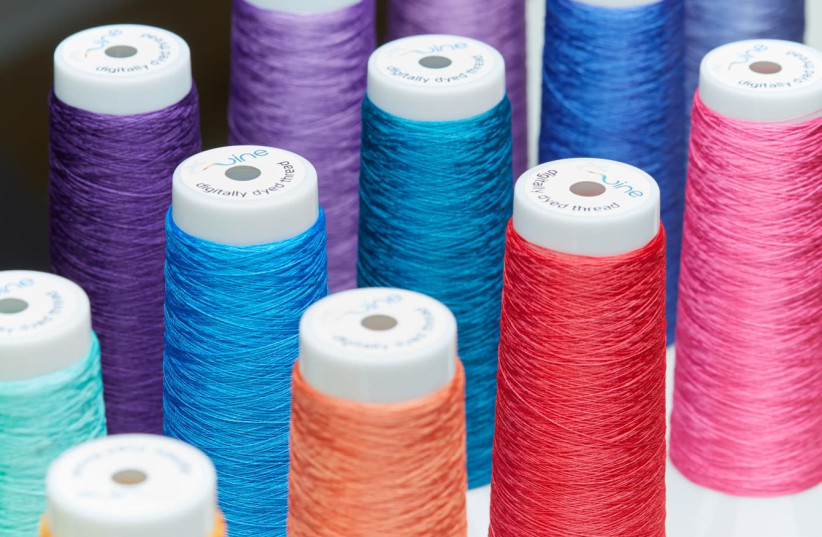A wearable, textile-based device developed by engineers in Texas could help declutter, enhance and – in the case of disabilities – compensate for deficiencies in visual and auditory inputs by tapping this underused sensory resource.
“Technology has been slow to co-opt haptics – communication based on the sense of touch – said Barclay Jumet, a doctoral student in mechanical engineering at Rice University in Houston who was the lead author on a study just published in Science Direct’s journal Device entitled Fluidically programmed wearable haptic textiles.
“Our increasingly connected and information-rich lives demand new modes of communication. Haptic cues offer many advantages for an on-the-go, always-connected lifestyle, yet wearable haptic devices often require extensive external hardware to provide the complex cues required for high-resolution delivery of information,” the team wrote.
“Of the technologies that have incorporated haptics, wearable devices often still require bulky external hardware to provide complex cues, limiting their use in day-to-day activities,” he added. The system of haptic accessories built by the Rice labs of Prof. Daniel Preston and Prof. Marcia O’Malley reduces the need for hardware by programming haptic cues into the textile structure of the wearables using fluidic control, building on an approach described in prior work.
“With a traditional control system using voltage and current, you’d typically need many electronic inputs to achieve complex haptic cues,” said Preston, whose mechanical engineering lab explores the intersection of energy, materials, and fluids. “In this device, we’ve offloaded a lot of that complexity to the fluidic controller and require only a very limited number of electronic inputs to provide sophisticated haptic stimulation.”

How do these special textiles work?
Comprised of a belt and textile sleeves, the wearables rely on fluidic signals like pressures and flow rates to control the delivery of complex haptic cues, including sensations like vibration, tapping and squeezing.
A small, lightweight carbon dioxide tank affixed to the belt feeds airtight circuits incorporated in the heat-sealable textiles, causing quarter-sized pouches – up to six on each sleeve – to inflate with varying force and frequency.
In an experiment showing the device’s use for real-world navigation, these cues served as directions guiding a user on a 1.6-kilometer-long route through the streets of Houston. In another experiment, a user outlined invisible Tetris pieces in a field by following the directions conveyed to them through the haptic textiles.
“The belt incorporates a slimmed-down version of the electronic control system that might otherwise be required,” Jumet said. “In this case, we had twelve pouches across two sleeves progressively inflate to indicate one of four directions: forward, backward, left or right. So instead of requiring twelve electronic inputs, we embed that complexity into the sleeve and are able to use only four inputs – a reduction by two-thirds.
“In the future, this technology could be directly integrated with navigational systems so that the very textiles making up one’s clothing can tell users which way to go without taxing their already overloaded visual and auditory senses, for instance by needing to consult a map or listen to a virtual assistant.”
Moreover, the wearable textile device could incorporate other sensing and control mechanisms to allow users with limited vision or hearing to detect obstacles and navigate dynamic environments in real time.
“Devices like this could, for instance, be helpful for people suffering from hearing loss,” said O’Malley. Cochlear implants can restore speech perception for people with severe hearing loss, but the medical literature shows that these individuals still struggle to understand speech in noisy environments and can experience difficulty locating the sources of sounds. Haptic feedback has the potential to enhance cochlear implant performance or make lip-reading easier for patients.
“Movies, games and other forms of entertainment could now incorporate the sense of touch, and virtual reality can be more comfortable for longer periods of time.”
“You’ll have better recognition and interpretation of the sounds processed by the cochlear implant if they’re reinforced with haptic cues conveying the same information encoded in a different way,” O’Malley said.
Another application example is restoring the sense of touch for an amputee by embedding sensors on a prosthesis to gather data that the wearables could relay as haptic feedback elsewhere on the body. “The haptic feedback felt by the user would in this case be directly correlated with the actions they’re taking” she said. “One of the big advantages with using these smart textiles for haptic devices is that they bring a lot more freedom and flexibility to the design space. We’re no longer constrained by the size or geometry of components that need to be incorporated into a design.”
The heat-sealable textiles are also resilient to wear and tear, making the device suitable for intensive daily use.
“Instead of a smart watch with simple vibrational cues, we can now envision a ‘smart shirt’ that gives the sensation of a stroking hand or a soft tap on the torso or arm,” the team said. “Movies, games and other forms of entertainment could now incorporate the sense of touch, and virtual reality can be more comfortable for longer periods of time.”
